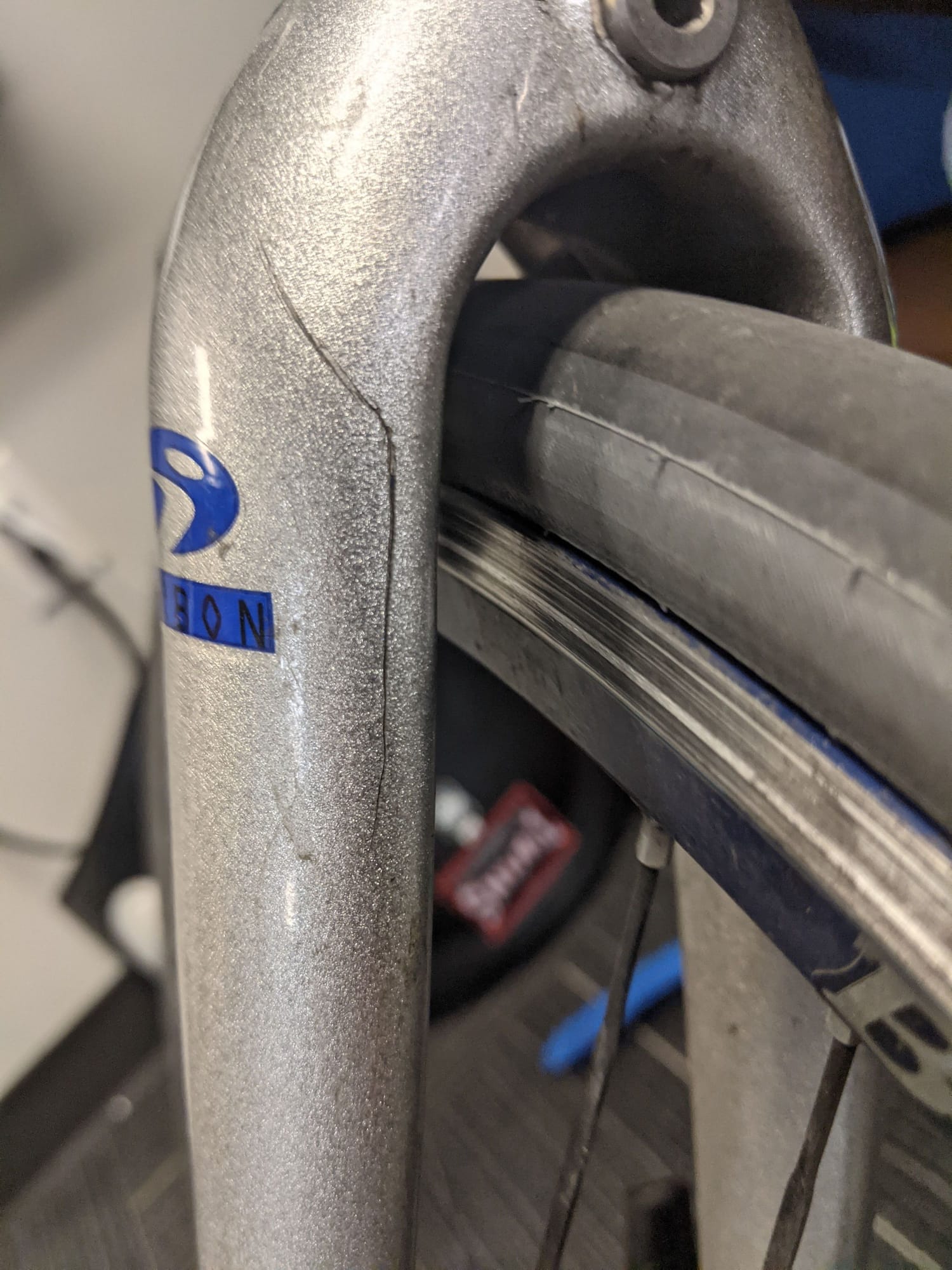Originally Posted by
Harold74
What I seek advice on in this thread is any of this (ala carte):
1) Do you think that this is a crack in the carbon? If so, what probability would you say applies to your diagnosis? 30%? 77%? 99%?
2) If you believe this to be a carbon crack, what informs your opinion?
3) Would you ever expect to see a paint only crack of this sort on a steel fork?
4) Do you think that the crack started vertical and then turned horizontal? Or the reverse?
5) When the event that initiated the crack occurred, do you think that it put the cracked area of the fork in vertical tension or vertical compression? Or some other state of stress?
6) Is there any chance that we got better at painting carbon forks over time such that frightening paint cracks did not result in our throwing out perfectly good forks? I get the impression that the paint and finish used on carbon forks has changed since their early days. I don't see a lot of "bedazzled" paint jobs on carbon forks like that on my Zurich.
7) Would one expect older carbon forks to be stronger than modern ones or weaker? The technology has improved but, then, that has likely resulted in less conservatism in design and construction.
8) What in-ride event do you foresee causing failure if the fork is carbon cracked?
 Used bike inspection fail.
Used bike inspection fail.
All speculative:
1) based on this one photo I am 90% confident it's a crack in the carbon, but it may not be a deep crack with functional consequences (0% confidence in speculating how many layers/mm deep).
2) the paint layer(s) is thin and I do not expect the paint crack to expose that much "blackness" underneath unless a black base coat was used.
3) no, due to carbon being more flexible than paint so the brittle paint can chip without carbon being damaged underneath.
4) I think the crack was the result of poor manufacturing such that repeated cyclic stresses from riding caused a weak area of the fork to fail.
5) my guess is horizontal tension.
6) yes I think modern painting involves many layers/stages so that one can better discern the depth of a surface crack.
7) I expect modern forks to be stronger but that is assuming that the testing standards have evolved to be more stringent (it may will have evolved in the opposite direction, or not at all).
8) jumping off of curbs or hitting a proper pothole at speed can cause that blade to buckle but the remaining blade should theoretically still hold it up (hopefully).